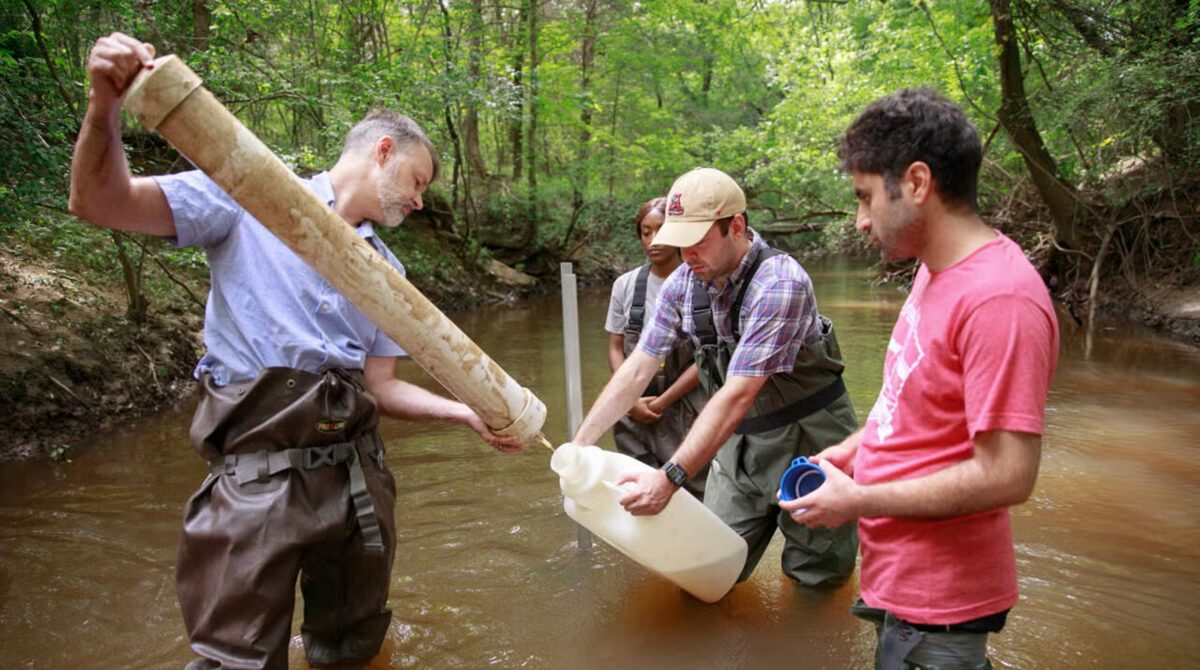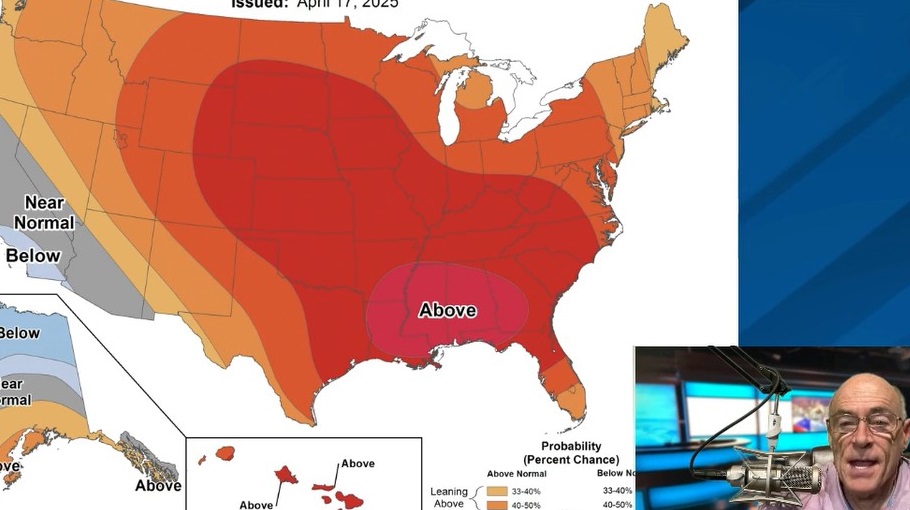Good times roll as Mobile prepares for Mardi Gras

A float is under construction in the Mystics of Time float barn in Mobile. The MOT formed in 1948 and first paraded the following year. (Mike Kittrell/Alabama NewsCenter)
“If, as a child, you saw, every Mardi Gras, the figure of Folly chasing Death around the broken column of Life, beating him on the back with a fool’s scepter from which dangled two gilded pig bladders, wouldn’t you see the world in different terms, too?”
Attributed to Mobile’s Renaissance man Eugene Walter, the above query captures at once the merriment and mystery enveloping the Western Hemisphere’s oldest pre-Lenten celebration.
If you’re confused, that’s OK.
Mobile’s Carnival season dates back more than three centuries, so understanding the timeline, traditions and general tomfoolery from which it sprang often leaves onlookers pleasantly puzzled – yet thoroughly entertained – by three weeks of parades and revelry unparalleled in their pageantry.
Mardi Gras has a rich history in Mobile from Alabama NewsCenter on Vimeo.
In addition to the more than 100,000 guests who attend Mardi Gras balls each year – sponsored and privately funded by mystic societies known as krewes – the annual festival also attracts more than one million parade-goers, making the Azalea City’s observance the second-largest community festival in the nation each year.
Architect and historian L. Craig Roberts sums up the experience in his recently released “Mardi Gras in Mobile”:
“As beautiful as the city is, its greatest treasure may be found in its soul. Its soul is the culture of Mardi Gras,” Roberts wrote.
Meanwhile, the three-week celebration each February pumps a conservatively estimated $250 million into the city’s economy, but that’s a different story for a different day.
The basics
Roberts said it’s hard to quantify the true cultural impact of the celebration because it depends on how much people know about its roots “as to whether they internalize it and to what extent.”
That said, Roberts noted it’s difficult to discount the importance of an observance that predates the formation of the United States by roughly three-quarters of a century.
As he points out in his book, however, there are a few housekeeping items even the most casual Mardi Gras enthusiast should understand before delving into its fascinating history. For instance:
- Mardi Gras is the day; Carnival is the season. Mardi Gras is French for Fat Tuesday and is also known as Shrove Tuesday, or the day before Ash Wednesday when Lent begins. Carnival refers to the weeks of parades, balls and other parties leading up to Mardi Gras Day.
- Mobile is the birthplace of Mardi Gras in the Western Hemisphere. The French settled Mobile in 1702, and it is believed the first Mardi Gras celebration in the New World was held here in 1703.
- There are two Royal Courts of Mardi Gras run by the Mobile Carnival Association and the Mobile Area Mardi Gras Association. These associations are separate from the myriad mystic societies and select their courts from families whose participation dates back generations.
- Route A is the primary parade route. Although there are actually four routes, 95 percent of all parades follow Route A, a 2.5-mile course meandering through Mobile’s Central Business District.
- Mobile’s Mardi Gras colors are strictly purple and gold. Green was added to the palette in New Orleans in the 1880s.
- Parades are all about the throws.
- Do not misbehave. Mobile’s Mardi Gras is a family event. There are plenty of adult-only events held throughout Carnival, but neither illegal nor inappropriate conduct is tolerated.
Roberts notes in his book that when the European Carnival celebration began around the time the Roman Catholic Church was formed, there was no sugar to give up for Lent and alcohol was often a necessity given the impurity of the water supply. In turn, Carnival comes from the Latin word “carnal,” meaning “farewell to meat” or “farewell to flesh.”
He also points out that although the season appears tied to religious milestones, the observance itself is actually secular and not promoted by any particular denomination.
Carnival, he wrote, was established to begin the day after the Epiphany, also known as Twelfth Night, or 12 nights after Christmas when the wise men are said to have arrived at the nativity in Bethlehem.
Moving target
At last count, Mobile counted 75 mystic societies and 35 scheduled parades.
Those figures have fluctuated over the years, Roberts said, ebbing and flowing with the impact of wars, the Great Depression and the cultural upheaval of the 1960s, followed by an inexplicable two-decade drop-off in participation.
“We hit the ‘90s, and there was the great financial bubble. The next thing you know, Mobile added at least 15 parades and 20 to 30 Mardi Gras organizations,” Roberts said. “It’s just amazing how quickly everything’s grown in the past 25 years. Now everything’s bigger and more lavish, and the last time that pinnacle was hit was in the late 1890s.”





























